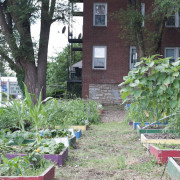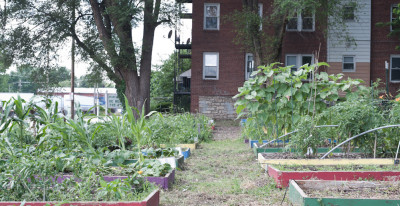When you see "locally grown" what do you think? Is the farmer down the road? Two counties over? How local is local? The Kansas City Food Circle defines local as 125 miles from the center of Kansas City, give or take a sliver of Iowa and Nebraska where needed. Our foodshed includes Topeka and Lawrence (but not necessarily Wichita or Columbia).
You may be surprised to learn that several national chains define "locally grown" as being within 400 miles. How far is 400 miles from KC? Let's look. 400 miles north goes to just past Minneapolis, MN. To the south it's almost to Oklahoma City, OK. To the east, 400 miles will nearly get you to Louisville, KY and to the west you can make it all the way out to the Colorado/Kansas border in 400 miles.
Whether it is coming from within that 400-mile boundary or beyond, your food has to pack for a long trip on a truck or airplane to get to your store. So what's the big deal? First, let's discuss Food Miles. Food miles refer to the distance food is transported from the time of its production until it reaches the consumer. Food miles are one factor used when assessing the environmental impact on global warming. Basically it boils down to this - if your food has more frequent flier miles than you do, it's a problem!
National corporations that are attempting to focus on local initiatives may define this term more broadly. We recently met with a national retailer interested in selling "hyper local" produce; they were particularly excited about being able to tell their customers what county the products came from. This is a unique feature for them, but knowing what county your food comes from is standard operating procedure for us. With the KC Food Circle, "local" means knowing more than just the county where your fruits, vegetables, meat and eggs come from; it also means knowing the actual people who grow it.
It means knowing your farmer and knowing the story of your food.




